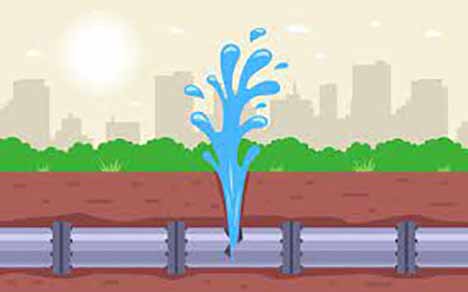
Pipe leaks in the home are a fairly common problem, says Vineyard Management. As long as there are water pipes in a certain part of your home, it is possible to have water line leaks in that location.
However, water leaks in the home are not equally damaging. The severity of a water pipe leak depends on where it happens and how long it has been going on.
The most damaging water leak in your home is under your home. A broken water pipe beneath your house poses a huge threat to the structural integrity of your building.
What should you do when a broken water line is under your home?
Broken water line under your home? Here is what to do
If it is clear that you have a broken water pipe under your home, do this:
- Shut off the water supply
Turn off the water supply at the main water shut-off valve. If the water keeps running, the hole beneath your home will expand.
- Call a plumber immediately
Tell the plumber it is an emergency. If the plumber cannot come at once, they will tell you what to do for the time being.
However, if you suspect that you have a broken water pipe under your home but you are not sure, look for the following signs in your home:
- Spreading patches of water stains on your floors and lower sections of walls.
- Signs of warping on wooden flooring and damp areas on carpet flooring.
- Musty odors and dampness hang over the rooms or sections of the ground floor.
- Persistent wet spots near the foundation of your building, the basement or crawlspace, even when the weather is dry.
- Unusual sounds inside the home – running water and gurgling pipes – even when the faucets are turned off.
- Higher water bills that are not accompanied by increases in your home’s water consumption.
Steps to detect the sources of water leaks in your home
If you find some of these signs in your home, the next step is to confirm the leak;
- Turn off your faucets
Turn off all faucets and every water-utilizing appliance in the home. To be sure, you may also close the shut-off valves for individual plumbing fixtures and appliances.
- Find your water meter
To know if you have a leak inside or outside your home, you will need the water meter. Your water meter is outdoors, on the curb close to the street. It will usually be in a direct line with your main outdoor faucet.
- Check if the water meter is reading
Having found the water meter, check if the blue snowflake dial is moving. This dial indicates the flow of water through your pipes. If the dial moves while your faucets are closed, there is a leak.
- Shut off the main water supply
To determine if the leak is inside your home or the main water line, find the main water shut-off valve and turn it clockwise to cut off the water supply to your home.
- Check the water meter again
If the water meter dial continues to move after you turn off the water supply to your home, you may be sure the leak is in your main water line.
- Locate the pipe
Finding a leak beneath your home is different from finding a leak inside your walls. If the leaking pipe is underneath a concrete slab, you will need specialized equipment. A professional plumber will have the tools and skills to do this job.
Finding and fixing leaky water pipes under the home
Professional plumbers use the following methods when looking for underground water leaks:
- Infrared cameras/thermal imaging tools
These tools map temperature differences inside the ground. Water escaping from pipes will alter the surrounding area’s temperature, making it possible to detect a leak.
- Listening devices/acoustic mics
These mics pick up the vibrations of water as it flows through a pipe and the distinctive sounds of air escaping from a broken pipe. These tools also help the plumber determine the depth of the damaged pipe.
To fix the leak, you have several options. Depending on the leak location and its severity, you may use an invasive or non-invasive repair method.
- Invasive pipe repair
This involves tunneling into the area above the water line to remove and replace it. This method involves significant costs because you may have to dig up the concrete.
- Non-invasive pipe repair
Instead of breaking the concrete, the plumber can reroute the pipe and leave the damaged sections inside the ground.
The proper method depends on the plumber’s assessment of the situation. Because of the cost and complexity of these kinds of plumbing repairs, it is vital that you only work with an experienced plumber when dealing with potential water leaks in your home.


